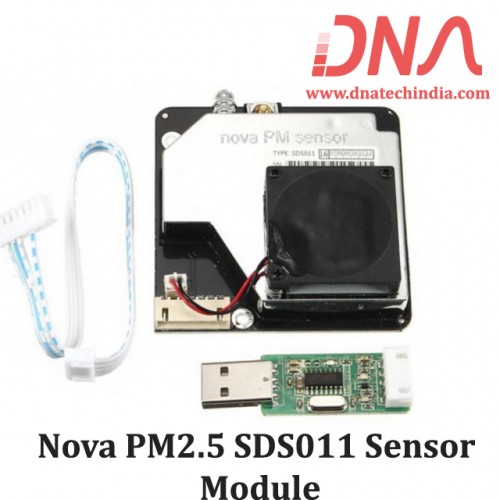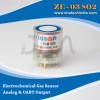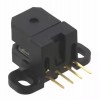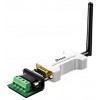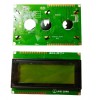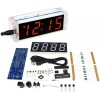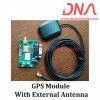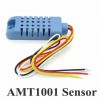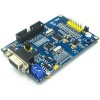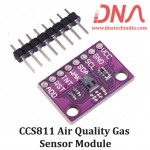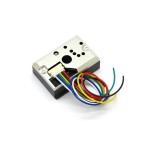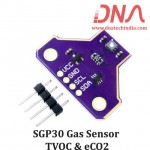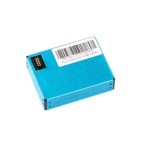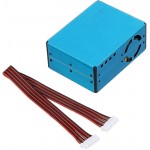Nova PM2.5 SDS011 Air Quality Sensor Module
- Stock: 30 InStock
- SKU: 1999 | DAA980
-
Rs.
2,577.12 (inc GST)
Rs.2,184.00 + GSTQty :
GST Invoice on all Purchase. So you will be eligible to take input tax credit. |
IF component not in Stock or require more quantity or want to buy in bulk e-mail us your requirements on: dnatechindia "at" gmail.com. |
| Shipping : Due to Covid-19 situation delivery will be affected. Delivery period due to covid-19 issue will be from 4 - 12 days depending upon your location. |
Nova PM Sensor SDS011 PM2.5 Air Quality Dust Sensor with Digital Output
Nova PM2.5 SDS011 Laser based Air quality Detection Module
The SDS011 using principle of laser scattering,can get the particle concentration between 0.3 to 10um in the air. It with digital output and built-in fan is stable and reliable.
We have Various sizes of Sensor Modules. Check out our complete collection of Sensor Modules
If you are in Nashik you can buy this Electronic Component at our local shop at New CBS, Nashik or you can place order online and get it delivered at your doorstep anywhere in India. |
Characteristics of Nova PM Sensor SDS011 High Precision Laser PM2.5 Air Quality Detection Sensor Module
- Accurate and Reliable : laser detection, stable, good consistency;
- Quick response : response time is less than 10 seconds when the scene changes;
- Easy integration : UART output (or IO output can be customized), fan built-in;
- High resolution : resolution of 0.3ug/m3.
Applications of Nova PM Sensor SDS011 High Precision Laser PM2.5 Air Quality Detection Sensor Module
- PM2.5 Detector
- Purifier
- Air Exchangers
- Filtering system
Working principle:
Using laser scattering principle :
Light scattering can be induced when particles go through the detecting area.
The scattered light is transformed into electrical signals and these signals will be amplified and processed.
The number and diameter of particles can be obtained by analysis because the signal waveform has certain relations with the particles diameter.
The scattered light is transformed into electrical signals and these signals will be amplified and processed.
The number and diameter of particles can be obtained by analysis because the signal waveform has certain relations with the particles diameter.
Technical Parameters:
- Measuring output : PM2.5,PM10
- Range : 0.0-999.9 ug/m3
- Power supply voltage : 5V
- Maximum working current : 100mA
- Sleep current : 2 mA
- Operating temperature range : -20-50℃
- Response time : 1s
- Serial data output frequency : 1 time/s
- Particle diameter resolution : Less than 0.3um
- Relative error : 10%
Interface Specification:
- CTL : Control pin, reserved
- 1um : >0.3 Micron particle concentration, PWM Output
- 5V : 5 Volt power input
- 25um : >2.5 Micron particle concentration, PWM Output
- GND : GND
- R : Serial port receiver RX
- T : Serial port transmission TX
Related Links
NEW Products
Product Page : New Products
Winsen ZE03-SO2 GAS Sensor Module
Winsen ZE03-SO2 GAS Sensor ModuleElectrochemical Detection Module ZE03-SO2ZE03-SO2 Gas sensor can be..
Rs.13,216.00 (inc GST)
Rs.11,200.00 + GST
SKU: 1764 | DAB100
Stock: 2
H9700 2 channel Digital Output Small Optical Encoder Module
H9700 2 channel Digital Output Small Optical Encoder ModuleH9700 Unipolar Hall-Effect Sensor ICThe H..
Rs.1,652.00 (inc GST)
Rs.1,400.00 + GST
SKU: 7439 | DAF661
Stock: 3
DTECH IOT5064A RS485 Serial to Ethernet Converter Bluetooth adapter
DTECH IOT5064A RS485 Serial to Ethernet Converter Bluetooth adapterDTECH IOT5064A RS485 Serial to Et..
Rs.6,486.76 (inc GST)
Rs.5,497.25 + GST
SKU: 7466 | DAG852
Stock: 1
JHD 204 20X4 GREEN LCD DISPLAY CHINESSE
JHD 204 20X4 GREEN LCD DISPLAY CHINESSEJHD 204 20X4 GREEN LCD DISPLAY CHINESSEThis is a 20x4 LCD dis..
Rs.402.09 (inc GST)
Rs.340.75 + GST
SKU: 7663 | DAF077
Stock: 5
Have You Seen
Product Page : Have You Seen
4 Digit DIY Electronic Clock kit Multicolor LED time Week Temperature Date Display with Clear case Cover (blue)
4 Digit DIY Electronic Clock kit Multicolor LED time Week Temperature Date Display with Clear case C..
Rs.796.50 (inc GST)
Rs.675.00 + GST
SKU: 7443 | DAF836
Stock: 5
GPS Module With External Antenna
GPS Module With External AntennaThis is a GPS Module with External Antenna. It is based on Skytra S1..
Rs.1,180.00 (inc GST)
Rs.1,000.00 + GST
SKU: 0397 | DAE263
Stock: 0
AMT1001 Resistive Temperature And Humidity Sensor
AMT1001 Resistive Temperature And Humidity SensorAMT1001 Resistive Humidity and Temperature Sensor M..
Rs.335.12 (inc GST)
Rs.284.00 + GST
SKU: 3291 | DAD402
Stock: 9
ADS1256 24bit High Precision ADC STM32F103C8T6 Module
ADS1256 24bit High Precision ADC STM32F103C8T6 ModuleADS1256 24bit High Precision ADC STM32F103C8T6 ..
Rs.5,198.70 (inc GST)
Rs.4,405.67 + GST
SKU: 7630 | DAF121
Stock: 0
Related Products
CCS811 Air Quality Gas Sensor Module
CCS811 Air Quality Gas Sensor ModuleCCS811 Air Quality Sensor ModuleThe CCS811 Air Quality Breakout ..
Rs.1,932.84 (inc GST)
Rs.1,638.00 + GST
SKU: 1361 | DAA932
Stock: 9
GP2Y1010AU0F Optical Dust Sensor
GP2Y1010AU0F Optical Dust SensorGP2Y1010AU0F Module is used to Sense Dust Particles in air and also ..
Rs.486.75 (inc GST)
Rs.412.50 + GST
SKU: 1511 | DAE082
Stock: 0
ZH03B Laser Dust Sensor Module
ZH03B Air Quality Dust Sensor Module ZH03B is a Air Quality Sensor. ZH03B Sensor detects Dust..
Rs.2,050.00 (inc GST)
Rs.1,737.29 + GST
SKU: 2139 | DAB517
Stock: 0
SGP30 Gas Sensor TVOC & eCO2
Indoor Air Measurement SGP30 Gas SensorSGP30 Indoor air Quality measurement gas sensor module for TV..
Rs.1,585.92 (inc GST)
Rs.1,344.00 + GST
SKU: 2332 | DAB923
Stock: 4
PMS7003 PM2.5 Dust Sensor BY PLANTOWER
PMS7003 PM2.5 Dust SENSOR BY PLANTOWERPMS7003 PM2.5 SENSOR BY PLANTOWERPMS7003 PM2.5 dust sensor is ..
Rs.1,994.20 (inc GST)
Rs.1,690.00 + GST
SKU: 3825 | DAG425
Stock: 10
PMS5003 PM2.5 AIR QUALITY SENSOR
PMS5003 PM2.5 AIR QUALITY SENSOR PMS5003 PM2.5 AIR QUALITY SENSOR The PMS5003 is a digital particula..
Rs.1,652.00 (inc GST)
Rs.1,400.00 + GST

